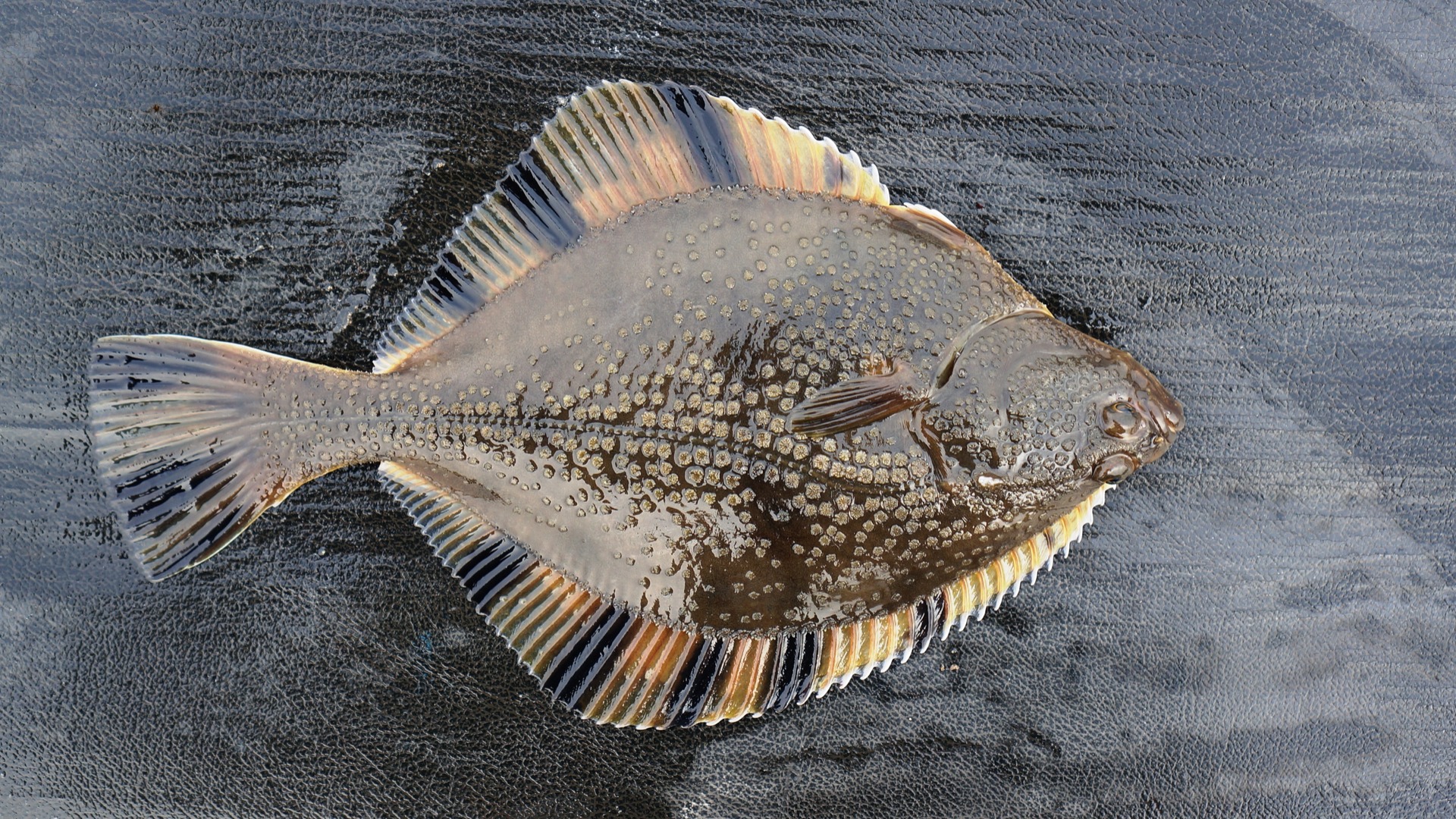
The recreational harvest limits for each state are based on the recreational catch in 1998.Anglers fish for summer flounder from the shore, piers, and boats with hook-and-line gear.In 2021, recreational landings were 6.8 million pounds, according to the NOAA Fisheries recreational fishing landings database.Summer flounder are one of the most popular recreational fish on the Atlantic coast.Management measures also require the mesh on fishing nets to be a certain size to prevent bycatch of juvenile summer flounder and other species.

A TED is a sorting grid that is sewn into a trawl net to allow fish to pass through to the back of the net while preventing larger animals, such as turtles and sharks, from passing through by allowing them to escape through flaps above or below the TED.

Since 1992, all vessels fishing for summer flounder with bottom trawls off Virginia and North Carolina have been required to use NOAA Fisheries–approved turtle excluder devices (TEDs) in their nets.
Bottom trawls can unintentionally catch sea turtles. However, summer flounder are most common on sandy ocean bottoms, which are more resilient than other habitat types to the impacts of fishing gear. Bottom trawls contact the bottom and can impact bottom habitats. Commercial fishermen mainly use bottom trawls to harvest summer flounder, fishing offshore in the winter and inshore in the summer. Gear types, habitat impacts, and bycatch:. In 2021, commercial landings of summer flounder totaled 8.4 million pounds and were valued at approximately $25 million, according to the NOAA Fisheries commercial fishing landings database. There is a moratorium on entry into the commercial fishery. Monitoring of sea turtle catch occurs in the southern portion of the fishery. A permit is required to sell and purchase summer flounder. Fish and mesh size limits protect juvenile fish and help to maintain the part of the population that is able to reproduce. The commercial catch limit is further distributed among the states based on their share of commercial landings during the 1980s. They allocate 60 percent of the annual catch limit to the commercial fishery and 40 percent to the recreational fishery. Using scientific data on the summer flounder resource and fishery, managers determine how much summer flounder can be harvested the following year. Managed under the Summer Flounder, Scup, and Black Sea Bass Fishery Management Plan:. NOAA Fisheries, the Mid-Atlantic Fishery Management Council, and the Atlantic States Marine Fisheries Commission cooperatively manage the summer flounder fishery because significant catch of these species comes from both state waters (0-3 nautical miles offshore) and federal waters (3-200 nautical miles offshore). Large sharks, rays, and monkfish prey on adult summer flounder. Predators include spiny dogfish, monkfish, cod, hakes, sea raven, longhorn sculpin, and fourspot flounder. Larval and juvenile summer flounder are preyed upon until they grow large enough to fend for themselves. When suitable prey appears, flounder ambush them. Summer flounder lay on the ocean floor concealed, partly by sand and partly by their coloration, and wait for their prey to swim by. Adults are opportunistic feeders, eating whatever food is convenient at the time, and feed mostly on fish and crustaceans. Larval and post-larval flounder feed on zooplankton (tiny floating animals) and small crustaceans. Summer flounder eat a mixed diet of fish and invertebrates throughout their life. Newly hatched larvae move with the currents toward coastal areas, where they develop into juveniles. They release the eggs into the water column and the eggs hatch in waters of the continental shelf. Depending on their size, females have between 460,000 and more than 4 million eggs. The combination of these elements improves the chance of survival for larval summer flounder. 
Spawning peaks in October and November when water temperatures change and autumn plankton is most productive.They spawn several times throughout the spawning season.Summer flounder spawn in the fall and early winter when they migrate offshore.They are able to reproduce when they reach age 2 or 3.Males grow to more than 2 feet in length and females grow up to 3 feet.Summer flounder grow fast and have a relatively short life, about 12 to 14 years.







 0 kommentar(er)
0 kommentar(er)
